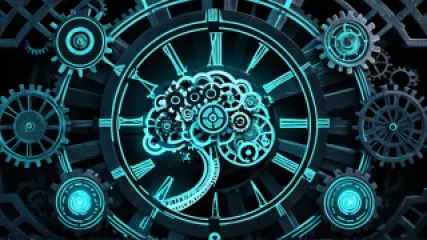What is the Availability Heuristic?
What is the Availability Heuristic?
The human mind is a fascinating and complex system, constantly processing information and making decisions. One of the fascinating aspects of our cognitive processes is the phenomenon known as the availability heuristic. In this article, we'll delve into the intricacies of the availability heuristic, exploring what it is, how it works, and its implications for our day-to-day lives.
Understanding the Availability Heuristic
The availability heuristic is a cognitive bias that occurs when individuals assess the probability or frequency of an event based on how easily it comes to mind. In other words, we tend to judge the likelihood of an occurrence based on how readily available the relevant information is in our memory.
This heuristic is a mental shortcut that our brains use to make quick decisions and judgments. It's a way of simplifying the decision-making process by relying on the information that is most accessible to us, rather than conducting a comprehensive analysis of all the available data.
For example, imagine you're asked to estimate the likelihood of a plane crash. If you've recently heard about a plane crash in the news, your brain might use that information as a basis for your estimate, leading you to overestimate the probability of a plane crash occurring. This is because the recent news event has made the information more available and memorable in your mind.
The Mechanisms Behind the Availability Heuristic
The availability heuristic is influenced by several factors, including:
- Salience: Events that are more salient or memorable, such as dramatic or emotional occurrences, are more likely to be recalled and influence our judgments.
- Familiarity: The more familiar we are with an event or piece of information, the more readily available it is in our memory, and the more likely we are to use it in our decision-making process.
- Recency: Recent events or information are more easily recalled and tend to have a greater impact on our perceptions and judgments.
These factors can lead to systematic biases in our decision-making and risk assessment. For example, individuals may overestimate the likelihood of rare but highly publicized events, such as terrorist attacks or natural disasters, while underestimating the probability of more common but less salient occurrences, such as car accidents or heart disease.
The Availability Heuristic in Action
The availability heuristic can manifest in various aspects of our lives, influencing our judgments and decision-making processes. Let's explore some examples:
1. Perceived Risk
As mentioned earlier, the availability heuristic can lead to an overestimation of the likelihood of rare but highly publicized events. For instance, people may perceive the risk of being a victim of a terrorist attack as higher than the risk of being involved in a car accident, even though the latter is far more common.
This phenomenon can have significant implications for public policy, as it can lead to disproportionate allocation of resources and attention to addressing less common but more salient risks, while neglecting more prevalent but less visible threats to public safety.
2. Investment Decisions
The availability heuristic can also influence our investment decisions. Investors may be more inclined to invest in companies or sectors that have recently been in the news or have experienced a significant stock price increase, even if the underlying fundamentals of the company or industry do not necessarily support such a decision.
This can lead to the formation of investment bubbles, as investors rush to buy into the "hot" stocks or sectors, based on the readily available information they have, rather than conducting a thorough analysis of the long-term prospects of the investment.
3. Stereotyping and Prejudice
The availability heuristic can also contribute to the formation and perpetuation of stereotypes and prejudices. When we are exposed to certain representations or examples of a particular group, these readily available images can shape our perceptions and judgments about that group, even if they do not accurately reflect the broader reality.
For instance, if the media predominantly features certain minority groups in negative or stereotypical contexts, individuals may be more likely to associate those groups with those characteristics, even if such associations do not accurately represent the true diversity and complexity of the group.
Mitigating the Availability Heuristic
Recognizing the influence of the availability heuristic is the first step in mitigating its impact on our decision-making. By being aware of this cognitive bias, we can try to counteract its effects and make more informed and rational choices. Here are some strategies that can help:
1. Actively Seek Diverse Information
Instead of relying solely on the most readily available information, make a conscious effort to seek out a wide range of perspectives and data sources. This can help you gain a more comprehensive understanding of a situation and reduce the influence of the availability heuristic.
2. Consider Base Rates
When making judgments or estimates, try to consider the base rates, or the underlying probability of an event occurring, rather than focusing solely on the most salient or recent information. This can help you make more accurate assessments and avoid overestimating the likelihood of rare events.
3. Engage in Debiasing Techniques
There are various debiasing techniques that can help mitigate the impact of the availability heuristic, such as:
- Considering alternative scenarios: Actively thinking about alternative explanations or outcomes can help counteract the tendency to focus on the most readily available information.
- Seeking outside perspectives: Consulting with experts or individuals with different backgrounds and experiences can provide a fresh perspective and challenge your own biases.
- Practicing mindfulness: Cultivating self-awareness and being present in the moment can help you recognize when the availability heuristic is influencing your decision-making and make more deliberate choices.
The Availability Heuristic and Psychological Well-Being
The availability heuristic not only affects our decision-making and judgments but can also have implications for our psychological well-being. By influencing our perceptions of risk and the salience of certain events, the availability heuristic can contribute to feelings of anxiety, fear, and uncertainty.
For example, if we are constantly exposed to media reports about natural disasters or terrorist attacks, our brains may overestimate the likelihood of these events occurring, leading to heightened levels of stress and anxiety. Conversely, if we are not aware of the prevalence of certain health-related issues, we may underestimate the importance of preventive measures, which can have negative consequences for our well-being.
Recognizing the impact of the availability heuristic on our psychological well-being can be an important step in developing strategies to maintain a healthy and balanced perspective on the world around us. By actively seeking diverse information, considering base rates, and engaging in debiasing techniques, we can work to mitigate the negative effects of this cognitive bias and promote greater self-awareness and mindfulness.
Conclusion
The availability heuristic is a fascinating and powerful cognitive bias that profoundly shapes our decision-making and perceptions. By understanding its mechanisms, recognizing its influence, and employing strategies to mitigate its effects, we can strive to make more informed and rational choices, and foster greater psychological well-being in our lives.
As we continue to navigate the complexities of the world around us, the study of the availability heuristic and other cognitive biases can provide valuable insights into the inner workings of the human mind. By embracing this knowledge and developing the necessary tools to overcome our biases, we can unlock our full potential and make more meaningful and impactful decisions.






